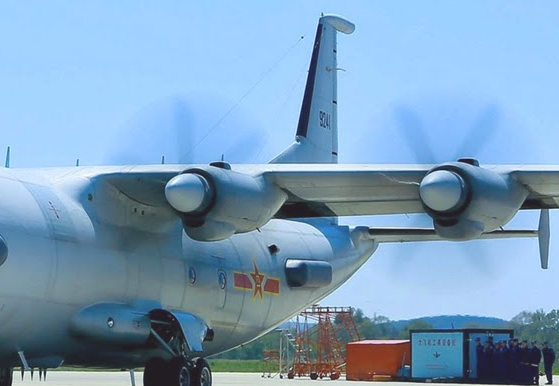
Good morning.
Last night, I spotted two aircraft using military callsigns and ranges of hex codes leaving the Dalian, Shanghai region where known Y-8Q/KQ-200 (GX6) & Y-8JZ (GX8) are based. They overflew the western Pacific east of Taiwan near Okinawa, then returned.
Last night, I spotted two aircraft using military callsigns and ranges of hex codes leaving the Dalian, Shanghai region where known Y-8Q/KQ-200 (GX6) & Y-8JZ (GX8) are based. They overflew the western Pacific east of Taiwan near Okinawa, then returned.
https://twitter.com/jointstaffpa/status/1376467616961753088
The easiest airframe to be identified is the Y-8Q/KQ-200 (GX6), tail no. 82014.
Given there was a Y-8Q last night on FR24 within the hex code ranges of other known Y-8Q codes, I feel confident #7A431C belongs to 82014. The margin of error exists because #7A431D was also out.


Given there was a Y-8Q last night on FR24 within the hex code ranges of other known Y-8Q codes, I feel confident #7A431C belongs to 82014. The margin of error exists because #7A431D was also out.



The other aircraft is a Y-8JZ (GX8), nose no. 24. There are 8 known Y-8JZs, of which the serial range for 4 of them are tied to 9xx1 coding from PLANAF 2nd Div/6th Air Regt.
9211, 9221, 9231 & 9241 S/Ns exist. I'm confident this one is 9241.
Note the new paint area on the tail.

9211, 9221, 9231 & 9241 S/Ns exist. I'm confident this one is 9241.
Note the new paint area on the tail.


I did identify a mystery code last night around Shanghai, #7BBAA8, however I'm not nearly as confident about this being assigned because the interval between this code and the known code #7B059F for it's partner aircraft Y-8JZ 9231 is fairly wide.
https://twitter.com/vcdgf555/status/1376423754918551553?s=20
• • •
Missing some Tweet in this thread? You can try to
force a refresh

















